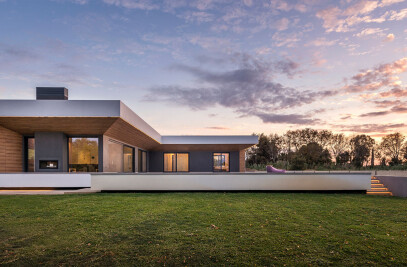OFFICETWENTYFIVEARCHITECTS have participated with the project 'York's Guildhall Complex' toy the 'Re-imagining York's Guildhall Complex connecting River and City' competition. Concept Description One of the reasons that a city like York presents such rich diversity is because of the successive uses and occupants of its built heritage over the preceding centuries. Its character is the result of an accretion of traces and memories laid down over time. One is able to appreciate the past because of the survival of buildings, paths and streets which have managed to adapt to ever-changing circumstances and needs. key characteristics of York’s urban texture, its scale and connectivity are particularly successful in accommodating this ever-changing succession of users. They offer every generation the opportunity to redefine itself within the continuity offered by a set network of streets and alleys and by major anchors such as the river, the cathedral, the high street and the guildhall. We took the enhancement of the intrinsic relationships of the site with three of these anchors as our starting point with an intention of rendering these relationships more visible and more easily legible. A network of restored connections and alleyways, which are so characteristic of York, is proposed between the guildhall, the river and the high street. We have then allowed the function or use of the buildings on the site to be determined from the current civic and economic opportunities. In many cities the river has historically been a key public and often ceremonial urban element. Although this stretch of the river in York doesn't celebrate the river's edge with esplanades, as is the case in many European cities, it nonetheless acknowledges its importance. The most important facade of the civic building, in dressed stone, proudly faces the river while those parts of the building facing away from the river are simply utilitarian brick. Recent buildings too have signaled the importance of the river with terraces and glassy facades. What has been lost to the site, however, is the network of small scale connections between the more public spaces of the High Street and the river front. Historically these allowed a more subtle pedestrian percolation through the site and access to a multiplicity of smaller properties which were not sufficiently grand to occupy more prominent sites. One link of particular importance was the tunnel between the square in front of the guildhall and the river front. By today's standards however, and because of the near annual flooding of the river, reliance on this link as a regular thoroughfare is not possible. Instead we have proposed a gradual stair down to river level along the side of the guildhall and leading down through an opening in the river wall onto a new river level walkway. This new way through makes a major reconnection between the High Street and the river, both emphasizing the importance of the river to York and providing access to the riverfront for the many thousands of tourists who visit the City. The role of the river in the City's history will be the subject of a permanent outdoor exhibition in a space poised halfway between the levels of the river and the Guildhall Square. It is envisaged that the space will inevitably be flooded from time to time and the exhibition is to be of sufficient scale and robustness to allow this. Explanatory panels will be engraved in stone around the perimeter wall and the exhibits might include a replica longboat and perhaps items of heavy machinery associated with the historic trade and industries along the riverside. The exhibition may then continue indoors and can occupy the ground and first floors of the Atkinson building. Washrooms for visitors are provided at the lower exhibition level. The walk alongside the river itself will be widened and a lift (which can be sealed with flood barriers as necessary) will give access to the river walk from the upper level for the less able. To the west of the Guildhall the existing passage which gives access to the civic office buildings will be connected through to join another major pedestrian link between the High Street and the river and to give access to a series of interconnected buildings. These will provide a number of premises for small creative businesses and as studios for artists and crafts workshops and associated stalls, somewhat in the spirit of a market. These studios and smaller premises will be linked back to the larger spaces of a new block which will provide back-up open plan office spaces, conference spaces, a major display hall a restaurant/café on the ground floor and a drinks bar at the top level. With regard to the Guildhall, and existing civic buildings adjacent, it is envisaged that these could become managed by an organization or interested parties that will allow the public to both visit and use these premises. A guildhall visitor experience is proposed where visitors will be shown the hall, the chamber, the secret rooms and stairwells within the building. This could culminate in a visit to the subterranean lane where an enactment or visual display of how the space was used many years ago would end the visit. Some rooms may enhance this visitor experience with a further display of objects that illustrate York’s history in river trade possibly in conjunction with the exhibition at the Atkinson room. Finally some rooms can be used as flexible rented office space or conference rooms. The Council will maintain use of the main chamber a few times a year and allocated offices could be booked to cover administrative needs on those occasions. Alternatively one would expect young entreprises who have outgrown the Annex’s open space office arrangement but wish to remain near this creative hub to migrate to the guildhall, where an affordable rent will secure them office space. For the main hall, we have responded to the current needs for toilet facilities and a catering kitchen by providing lots of washrooms in the basement, and a kitchen adjacent to the current janitor’s room. There is a blocked doorway through to the guildhall, opening of which will enable a direct link to our proposed kitchen. Less able guests have been provided with a WC at ground level. On the riverfront, we propose a connected and extended walkway that will allow pedestrians to enjoy uninterrupted walks along the river edge. The boatyard is seen to be relocated, to allow for the fluid passage of pedestrians without security or health and safety risks. A boat docking station will now be provided which can be used for boarding onto the cruisers of the river Ouse. The style of our new interventions will be subservient to the set-pieces of the guildhall and the river facade of the civic buildings. Our proposals will be in a quiet but contemporary manner in sympathetic materials and of a sympathetic scale and aspect. For these reasons we have chosen local brick for the new creative market building and the overall massing is broken up so as not to challenge the river facade of the civic buildings and so as to be reminiscent of the existing hutments on the site. Green roofs are proposed for the terraced roofs of the new ‘hut which will provide pleasant views out from the business hub. The paving and walls of the boat courtyard and associated new buildings to the east of the Guildhall will be predominantly local York building stone (darker and more consistent than that commonly used for paving) with brick and limestone dressings at the upper level. We feel that this sensitive approach is appropriate to our core concept of enhancing and building on the potential already latent in the site and its existing buildings. By providing well- serviced and appropriate accommodation and by reconnecting the site with the river and High Street we shall hugely enhance its value as a tourist and business destination.
Products Behind Projects
Product Spotlight
News

Mole Architects and Invisible Studio complete sustainable, utilitarian building for Forest School Camps
Mole Architects and Invisible Studio have completed “The Big Roof”, a new low-carbon and... More

Key projects by NOA
NOA is a collective of architects and interior designers founded in 2011 by Stefan Rier and Lukas Ru... More

Introducing the Archello Podcast: the most visual architecture podcast in the world
Archello is thrilled to announce the launch of the Archello Podcast, a series of conversations featu... More

Taktik Design revamps sunken garden oasis in Montreal college
At the heart of Montreal’s Collège de Maisonneuve, Montreal-based Taktik Design has com... More

Carr’s “Coastal Compound” combines family beach house with the luxury of a boutique hotel
Melbourne-based architecture and interior design studio Carr has completed a coastal residence embed... More

Barrisol Light brings the outdoors inside at Mr Green’s Office
French ceiling manufacturer Barrisol - Normalu SAS was included in Archello’s list of 25 best... More

Peter Pichler, Rosalba Rojas Chávez, Lourenço Gimenes and Raissa Furlan join Archello Awards 2024 jury
Peter Pichler, Rosalba Rojas Chávez, Lourenço Gimenes and Raissa Furlan have been anno... More

25 best decorative glass manufacturers
By incorporating decorative glass in projects, such as stained or textured glass windows, frosted gl... More

























